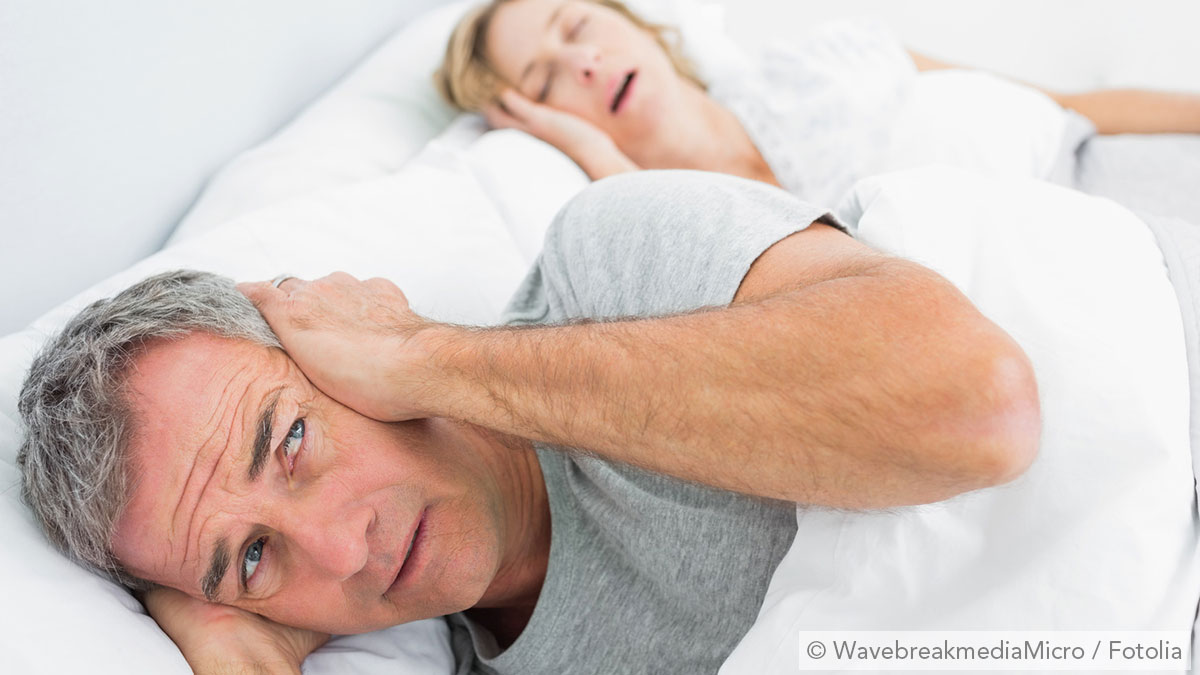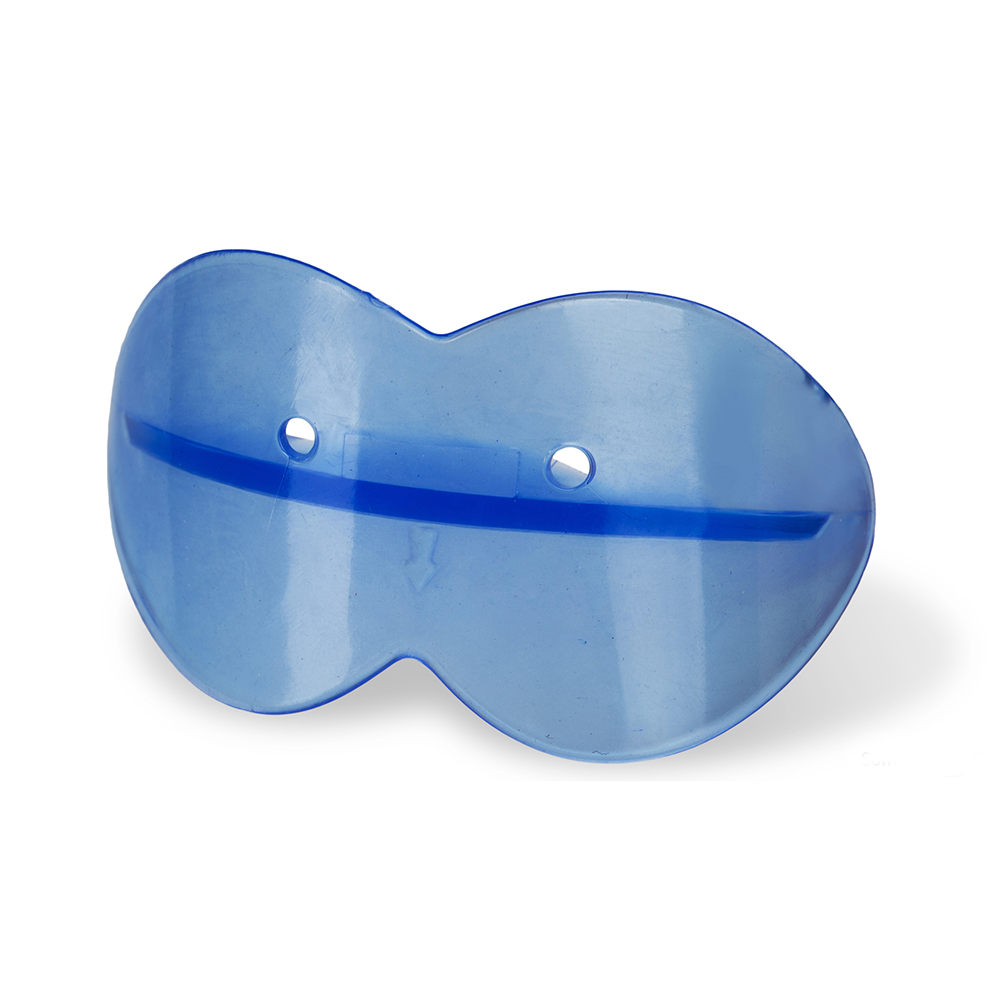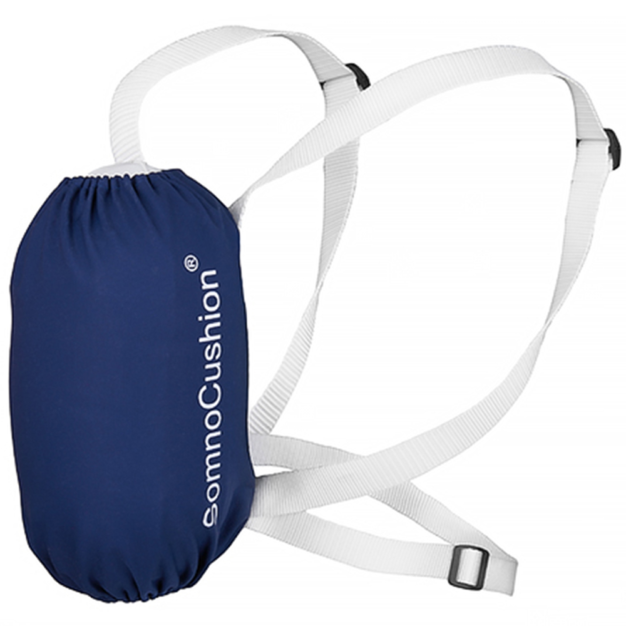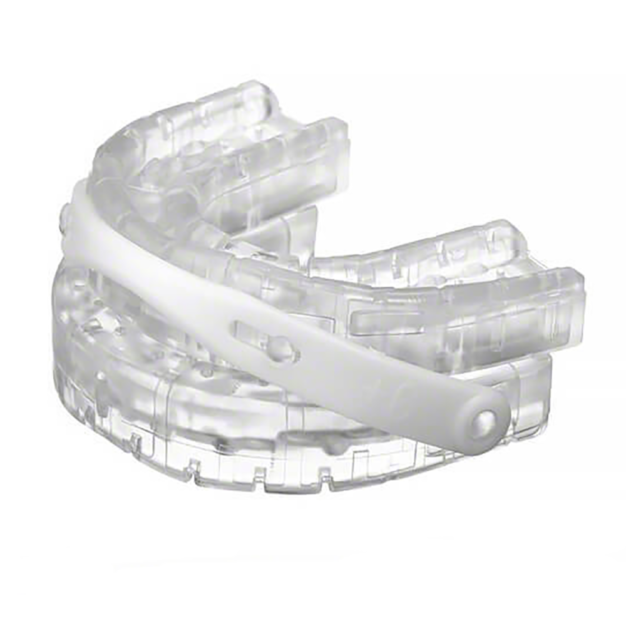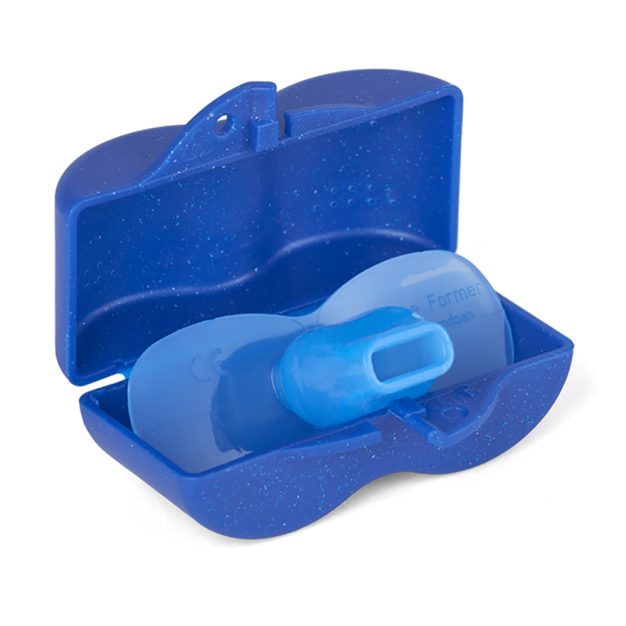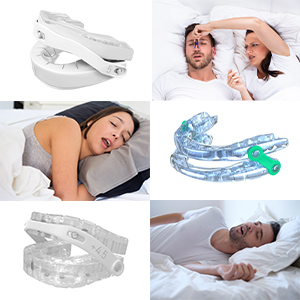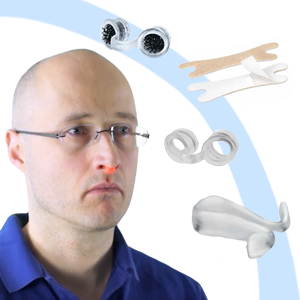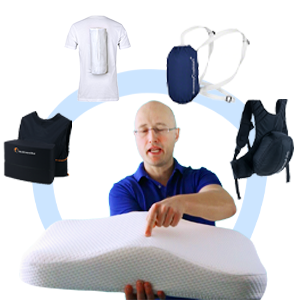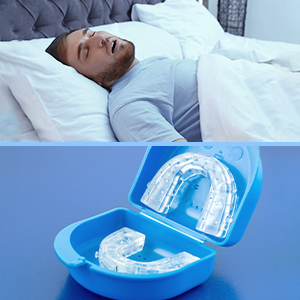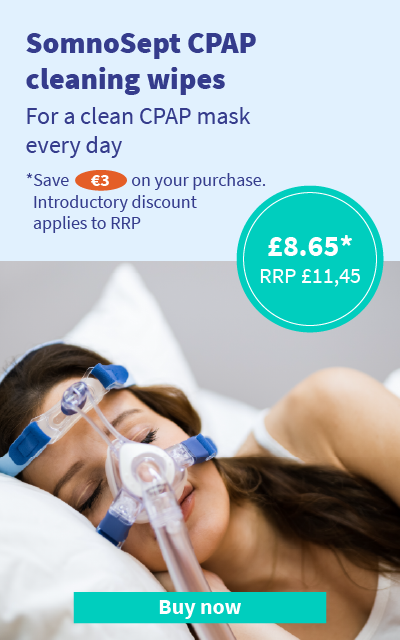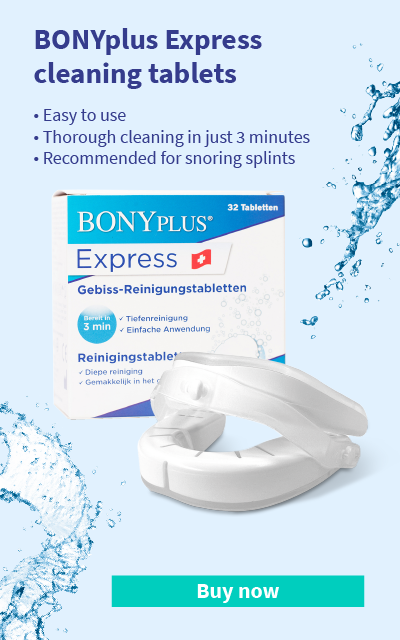Unfortunately, there is no “single” way to stop snoring and therefore no universal answer to the question “ How to stop snoring ? ” Snoring may have several causes and there are quite different solutions to address them. We will show you five medically proven snoring remedies against your snoring issue, with which you can prevent snoring.
Tip 1: Improve Nasal Breathing
Impaired nasal breathing is rarely the only reason for snoring. More often snoring occurs in the rear throat area (solution: snoring mouthpieces) or in the transient area between the oral and pharyngeal cavity (solution: snoring mouth guards). Nevertheless, impaired nasal breathing is one of the major snoring triggers. Simply put, you won’t be able to stop snoring when your nose is congested.
First Choice For Better Nasal Breathing – Use a Nasal Dilator
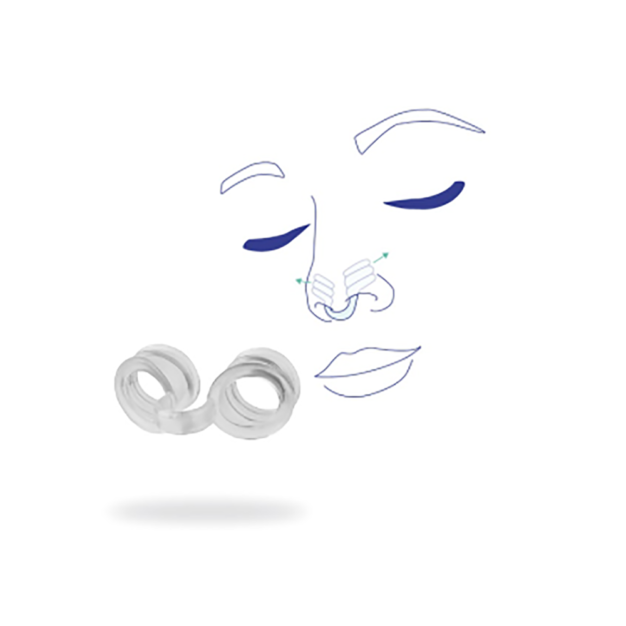
How to stop snoring? One possible way might be the through the use of a nasal dilator, also called a nose vent or snoring clip. This snoring aid improves nasal breathing and, in turn, stops nasal snoring. It consists of two small, soft plastic arches or tubules that are connected through a bridge (the form varies depending on the manufacturer). Every arch or tubule is gently pushed in a nostril. This expands and stabilizes the nasal entrance and the adjoining anterior part of the nasal cavity. The nasal passages cannot collapse or contract, even during strong inhalation. You start to breathe freely. In medical terms, the process of opening or widening is called “dilation”, which is why the snoring aids described are also sold under the term “nasal dilators”.
An alternative to nasal dilators / nose vents are nasal strips. They are attached to the outside of the nasal bridge and gently widen the wing of the nose. They can be nearly as effective as nasal dilators. However, the adhesive on the strip’s may lead to allergic skin reactions. In addition, nasal dilators can be reused many times (while nasal strips are only for single use).
Quick Explainer: How A Stuffy Nose Causes Snoring
Just visualize the problem for a second: Your lungs are the vacuum cleaner, the airways are the suction hose and your nose is the vacuum cleaner’s suction nozzle. If the nozzle (nose) is clogged, it will lead to a strong vacuum in the suction hose (airways), since the vacuum cleaner (lungs) continues to suck in air. The vacuum cleaner’s hose may collapse in on itself and cause air turbulence along with funny noises. If your nose is congested, the same thing will happen to its airways! The nasal passages constrict, air turbulences arises, causing the tissue in the throat area vibrate and results in snoring noises.
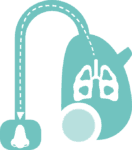
Tip 2: Avoid Mouth Breathing
The most common cause for snoring is breathing through the mouth while you’re asleep. But mouth breathing not only triggers snoring, it is also rather unhealthy in comparison to nasal breathing. This makes it all the more important to do something against this kind of snoring.
How to Stop Snoring – Use a Snoring Mouth Guard for Mouth Snoring
The most effective way to tackle mouth snoring is the use of an snoring mouth guard (also called a mouth shield).
It prevents mouth breathing during sleep and allows your body to switch to the more restorative nasal breathing. The mouth shield is a dental mouthpiece whose form closely resembles a boxer’s gumshield. It is placed between the lips and teeth and gently anchored to the dentiture of the upper jaw. The mouth guard has a very slim design and a comfortable fit. It is large enough that it cannot be accidentally swallowed during sleep (so there is no risk of choking).
An alternative to a snoring mouth guard is a chinstrap. It consists of a strap that is put around the chin and fastened above the head. This puts the fabric under pressure since it is made from elastic material. The strap prevents the chin from dropping down during sleep, which would otherwise force the mouth to open. Chin straps come with two disadvantages: When you lie on your back, a chin strap is likely to push back your jaw to your throat area and narrow it. This can increase the snoring noise. Second, a chin strap cannot hinder you from breathing through the corners of your mouth (which is a common form of mouth breathing).
Quick Explainer: How Mouth Breathing Causes Snoring
Imagine for a moment that the tissue at the back of your mouth and throat is a ship’s sail. When the wind blows against the sail, the sail starts to flutter, causing a banging noise. For oral snoring this means: When the air (“the wind”) rushing through the mouth blows against the slackened tissue (“sail”), it will start to vibrate and produce the symptomatic snoring noise.

Background Knowledge: Why is Nasal Breathing Healthier than Breathing Through the Mouth?
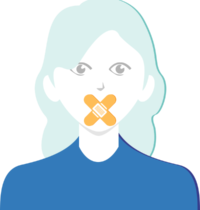
Nasal breathing is the most natural and healthiest form of breathing. It is far more effective than mouth breathing in filtering out dust and dirt particles, germs and pathogens. Furthermore, nasal breathing always raises the air to body temperature before it reaches the lungs. When the outside air – on its way through the nose – is cold, it is warmed up, when it’s too hot, then the air is cooled down and contemporaneously moistened. In addition, nasal breathing increases oxygen saturation in your blood by up to 15%. Nasal breathing supplies the organs better with oxygen and the body can regenerate more easily: It will make it far easier for you to find restorative sleep. In contrast, mouth breathing can lead to dry mouth, mouth odor, inflamed mucous membranes and dental caries.
Tip 3: Sleep On the Side
The second most common cause of snoring is the tongue relaxing, falling back into the throat and constricting or blocking the airways while asleep. So what can you do against this type of snoring? Because this problem only occurs when sleeping on the back, there is an easy fix to it: Try sleeping on the side (ideal) or consider sleeping in a prone position. Positional therapy (position trainers) can facilitate the transition from sleeping on your back to sleeping on the side.
Position Trainers Can Help You to Sleep on the Side
Positional therapy encompasses all products that help you to sleep in a lateral or prone position. These are primarily anti-snore backpacks, positional sleep belts and bandages. A foam wedge or an air cushion is integrated in the rear part of these anti-snore backpacks and positional sleep belts, which renders it impossible to sleep comfortably in a supine position. For sleeping comfort it is important that the foam wedge’s contact area on the back is relatively small, so that you don’t sweat during sleep. Because wherever the foam material comes into direct contact with the skin or the pajama fabric, the air can barely circulate.
As an alternative to anti-snore backpacks , anti-snoring position trainers or snoring vests, you can also change the sleeping position with the help of a snoring pillow. Such snoring pillows are elevated towards the middle, which makes it difficult to sleep comfortably there. Therefore the head automatically and unconsciously moves to one side or the other as you sleep, which is why you ultimately sleep on the side.
Quick Explainer: How Sleeping on the Back Can Lead to Snoring
Imagine the tongue as a large avalanche. When there is an avalanche coming down the mountains and for example buries the entrance of a tunnel, you’re barely able to enter or leave the tunnel. With tongue snoring, it is similar. If the respiratory tract (“the tunnel entrance”) is buried by the relaxed tongue (“the avalanche”), that has fallen back into the throat, only a small amount of air can stream through the opening (=nobody can pass the entrance of the tunnel anymore). If the respiratory tract is completely buried, the air can no longer circulate. In the case of tongue snoring, this issue can occur when the airways are completely blocked and the patient suffers from an obstructive sleep apnea (OSA).

Tip 4: Adjust Your Jaw Position
A relaxed tongue is the second most common reason for snoring: When the tongue falls back into the throat, while sleeping on the back, this causes tongue snoring. In this case, moving the lower slightly forward can fix the problem. This mandibular advancement can be achieved with a mandibular advancement device (MAD), also called a snoring mouthpiece.
Important: Comfortable Fit of Snoring Mouthpiece
Roughly speaking, snoring mouthpieces are broadly divided into two groups: monobloc mouthpieces and bibloc mouthpieces. Monoblocs consist of a single piece that can be custom-molded (by making an impression of your teeth). Monoblocs are rigid, i.e. once fitted, the mandibular advancement cannot be calibrated and they do not allow for lateral jaw movements. Biblocs consist of two separate pieces – one for each the upper jaw and the mandible. Each piece can be custom-moulded by making an impression of your teeth (and jawbone). The two pieces are connected with each other after the fitting is done, for instance, with flexible plastic bands. Biblocs allow for lateral movements which increases the wearing comfort significantly.
Both types of snoring mouthpieces (monoblocs and biblocs) gently move the lower jaw forward. This puts the tongue’s muscles as well as the tissue of the mandible and the pharyngeal cavity slightly under tension. The airways in the rear throat area widen, enabling breathing air to stream in and out without hindrance. Dentists refer to this protrusion of the lower jaw also as “advancement”, which is why these devices are also called “mandibular advancement devices”. With so much variety, here is some advice on how to choose the right snoring mouthpiece for you!
Tip 5: Exercise Your Palatal Tissue
Every form of snoring is also always accompanied by a tissue weakness. Relaxed tissue in the oral or pharyngeal cavity starts to vibrate when inhaled breathing air rushes over it. Of course, this is more likely to happen when the tissue is loose or unexercised, rather than toned. If you specifically promote muscle tone and tissue firmness, you can effectively reduce or completely stop the occurrence of snoring. There are a number of different kinds of exercise equipment and exercises.
Various exercise equipment for different forms of snoring
How to stop snoring, when it originates from the transition area between the oral cavity and the throat region (so called mouth snoring)? You should consider primarily strengthening the muscles around the lips and the mouth area. A near choice for that purpose would be the use of the FaceFormer method. With the FaceFormer, a tongue retention sleep aid, you can exercise and condition the muscles in the mouth region in such a way that you keep your mouth closed during the night. Moreover, with this device you exercise the musculature in the oral cavity and reduce the amount of loose tissue. If snoring occurs because your tongue falls back into the throat, the DragonPearl method may be the best choice of exercise. With this auxiliary means you can strengthen the tongue base and firm the tonsillar ring. The tongue’s musculature is unable to relax to the extent that it would fall back into the respiratory tract and block or constrict the supply of air in the throat area. This is how snoring can be prevented. Both exercise methods require patience and discipline to produce promising results.
Mandibular advancement device (MAD) purchasing guide
Advises you what you should pay attention to when buying a mandibular advancement device (MAD). We present different models and technical approaches here.
Nasal dilator purchasing advisor
What must you take into consideration when making a purchase? See all our nasal dilators presented here.
Positional therapy purchasing guide
Helps you make an informed buying decision when buying a positional therapy device, such as an anti-snoring vest or anti-snoring backpack.
Mandibular advancement device guide – answers based on practical experience
Mandibular advancement devices can help with sleep apnoea in a lot of cases. They are now also provided by the NHS. Find out how exactly they can help, and when they are provided by the NHS.
Medical Doctor, Berlin
Jan Wrede works as a medical doctor in Berlin. He studied medicine at FAU University in Erlangen-Nuremberg and Semmelweis University in Budapest. He had already written numerous scientific articles during his studies, especially on the subject of snoring.


